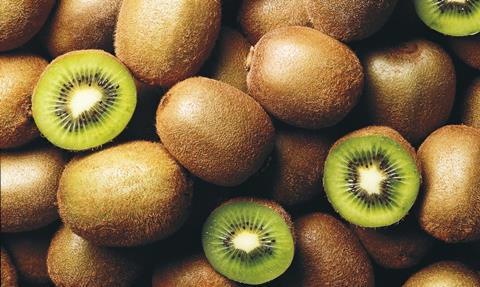Fresh fruit exports generated NZ$5.68bn FOB in 2025, up 42 per cent on 2024 results

New Zealand’s fruit exports have risen dramatically – up NZ$1.69bn compared to last year – largely driven by a significant increase in kiwifruit exports, according to new data published in late October.
United Fresh, which represents New Zealand’s pan-produce sector, has released its industry facts and stats publication, Fresh Facts 2025, containing critical data and insights about the New Zealand fruit and vegetable industry’s performance, and its outlook.
According to the report, New Zealand’s fresh and processed produce exporters achieved a combined value of NZ$6.85bn FOB (free on board) in the year to 30 June 2025. Australia and Japan remain its top export markets, followed by China and the EU.
“Fresh fruit exports alone generated NZ$5.68bn FOB, a NZ$1.69bn (42 per cent) increase over 2024,” said Jacob Lawes, project manager United Fresh Technical Advisory Group. “Kiwifruit continues to be our largest export crop, contributing NZ$3.66bn FOB towards our fresh produce exports, up 35 per cent compared to 2024.”
The New Zealand government’s goal to double the country’s produce exports from 2024’s NZ$5.08bn to NZ$10.16bn FOB by 2034 looks to be well within reach, based on export growth over the past three to five years. If the sector continues at this growth rate, fresh produce exports will be worth between NZ$14.8bn and NZ$18.5bn FOB by 2034.
“Fresh Facts 2025 provides accurate and reliable data, allowing us to track progress against this significant goal,” Lawes said. “[It] also reports our industry is well on track to reach the Aotearoa Horticulture Action Plan (AHAP)’s farmgate value goal of $7.36 billion.”
Fresh Facts 2025 highlights the growing understanding of the importance of Māori in New Zealand’s horticulture industry: 5,715ha of Māori-owned land produce fruit and vegetables – a 470 per cent increase over the last 20 years. Māori horticultural assets are now valued at NZ$3.7bn.
Each year, Fresh Facts provides detailed statistics for individual crop sectors, analysing overall volumes, and export markets and values, to identify emerging trends.
“This year’s publication contains fascinating data not previously included, such as the logistics of transporting fresh and processed produce. There are 13 air and seaports that handle produce exports, while our domestic rail network is responsible for transporting almost 11,000 tonnes of bananas, 15,000 tonnes of potatoes, and 19,000 tonnes of onions between selected regions, for both domestic and export customers.”
Starting in 2024, Fresh Facts began tracking industry’s sustainability efforts via industry annual reports, this has continued in the 2025 report.
“Despite 94 per cent of annual reports analysed in 2025 mentioning sustainability, only 17 per cent of organisations analysed have adopted the international sustainability framework, the United Nations Sustainable Development Goals (UN SDGs), and just 13 per cent use data to track their sustainability progress or achievements.
“While sustainability reporting has improved since 2024, there is still a significant gap between sustainability awareness and action. Industry needs to urgently address this gap, to safeguard our natural resources,” Lawes said.
This year’s Fresh Facts also looks at the key systems shaping the future of New Zealand’s produce industry, including: AI; food safety; industry standards; training and career pathways: and attracting new industry entrants through scholarships.



